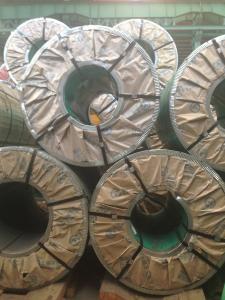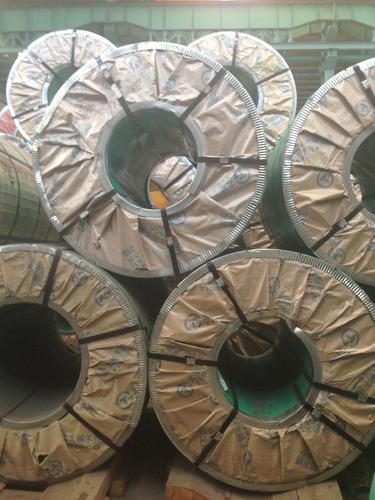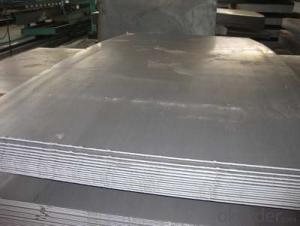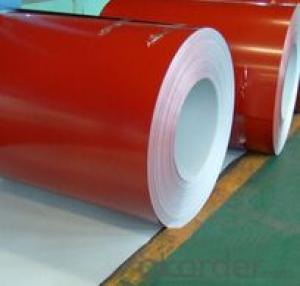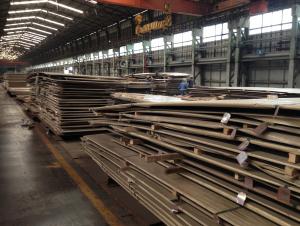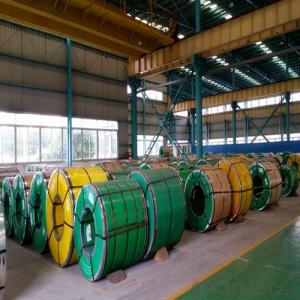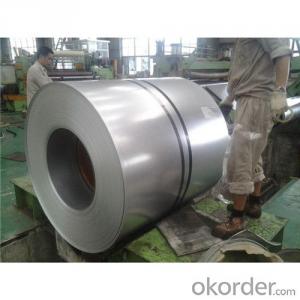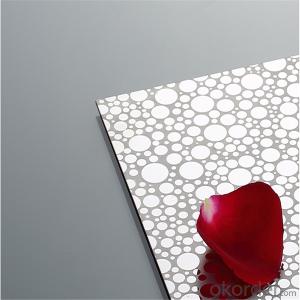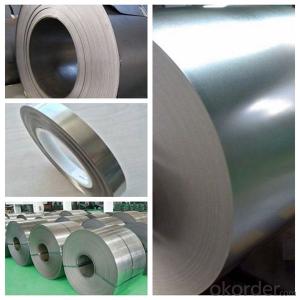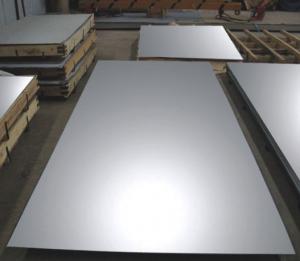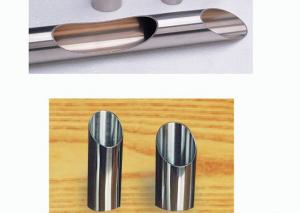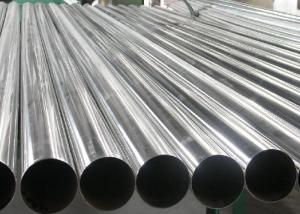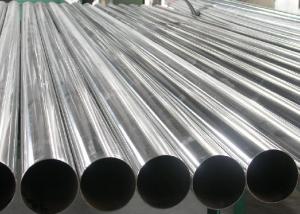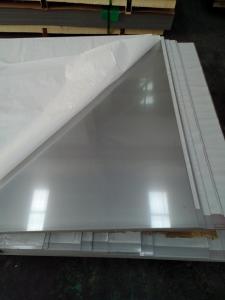Stainless Steel Coill And Roll Stocks With Best Price
- Loading Port:
- Shanghai
- Payment Terms:
- TT or LC
- Min Order Qty:
- 5 m.t.
- Supply Capability:
- 5000 m.t./month
OKorder Service Pledge
OKorder Financial Service
You Might Also Like
1.Structure of Product Description
we are one global 500 Enterprise, with fully-automic production line, we can produce stainless steel sheet, stainless steel coil, Stainless steel c. chich are widely used in the field of construction field and decoration field, etc. The detailed grade are as follows: 201, 202, 301, 304, 316, 410, 420, 430, etc.
The surface is including 2B, BA, Mirror Finish, Checkered, etc.
2. Main features of the product
a. Competitive price
b. Frist-Class Service.
c. Shortest service.
3. Image.
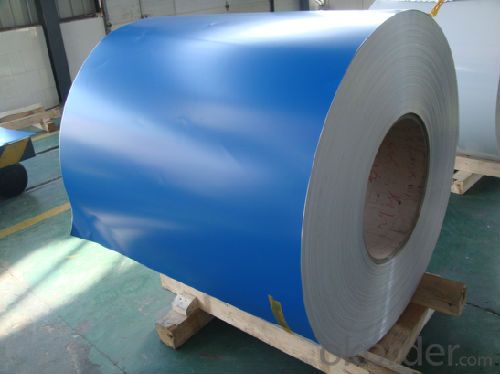
4. Product detailed sizes:
1000mm*2000mm,1500mm*3000mm, etc.
5. FAQ:
What is the quality standard?
---Usually our standard is GB3880-2006 or else.
What is the width range?
---It is from 1000mm to 2500mm, etc.
What is the length range?
---It is from 2000mm to 6000mm, etc.
What is the MOQ for your products yet?
---Normally it is around 3 tons/each size.
How many tons did you export in one year?
---Normally it is around 9000 tons totally.
Where is your client from?
---Normally it is from Japan, USA, ENGLISH, SINGAPORE, ETC.
What is your mainly products?
---Normally they are stainless steel sheet, stainless steel coil, stainless steel checkered sheet, stainless steel mirror finished sheet, color coated stainless steel sheet, etc.
How many times will you import from China in each year ?
---Looking forward to hearing from your news later.
- Q: How do you prevent crevice corrosion in stainless steel sheets?
- To prevent crevice corrosion in stainless steel sheets, several key steps can be taken: 1. Design and fabricate properly: Ensure that the stainless steel sheets have smooth surfaces and minimal crevices during the design and fabrication process. This will decrease the likelihood of trapping stagnant solutions and minimize the possibility of crevice corrosion. 2. Regularly clean and maintain: Clean the stainless steel sheets on a regular basis to eliminate any debris or contaminants that may contribute to crevice corrosion. Mild detergents or specialized stainless steel cleaners can be used for this purpose. 3. Avoid exposure to corrosive environments: Limit the stainless steel sheets' exposure to corrosive surroundings, such as those containing chloride ions (e.g., saltwater). If exposure cannot be avoided, consider applying protective coatings or using higher-grade stainless steel alloys that are more resistant to crevice corrosion. 4. Environmental control: Maintain proper environmental conditions, including temperature, humidity, and pH levels, to minimize the risk of crevice corrosion. Monitoring and controlling these factors can create a less favorable environment for corrosion to occur. 5. Regular inspection and maintenance: Conduct routine inspections to identify any signs of crevice corrosion, such as discoloration, pitting, or rough surfaces. If any corrosion is detected, take immediate action to remove it and repair the affected area. By implementing these preventive measures, the risk of crevice corrosion in stainless steel sheets can be significantly reduced, ensuring their durability and performance.
- Q: What are the limitations of using stainless steel sheets?
- There are a number of drawbacks associated with the use of stainless steel sheets. To begin with, stainless steel sheets can be quite costly in comparison to other materials. This can make them less viable for projects or applications with budget constraints. Furthermore, stainless steel sheets are relatively heavy, which can pose challenges in terms of handling and installation, especially when dealing with large quantities. This can lead to increased labor expenses and necessitate the use of additional equipment for transportation and installation purposes. Another issue is that stainless steel sheets are prone to scratching and denting. Despite being renowned for their durability, they are not completely resistant to physical damage. Scratches and dents can compromise both the appearance and functionality of the sheets, particularly in areas with heavy foot traffic or environments prone to potential impacts. Moreover, stainless steel sheets can be susceptible to corrosion, albeit to a lesser degree compared to other metals. Under certain conditions, such as exposure to saltwater or harsh chemicals, rust or other forms of corrosion may develop on stainless steel sheets. Regular maintenance and proper care are necessary to prevent or minimize this problem. Additionally, stainless steel sheets offer limited options when it comes to color. They generally come in shades of silver or gray, which may not be suitable for projects that require specific colors or specific aesthetic preferences. Lastly, stainless steel sheets exhibit poor insulation properties. They conduct heat and cold more effectively than other materials, resulting in greater energy loss and higher heating or cooling costs. In applications where insulation is vital, additional measures or alternative materials may need to be considered. To sum up, while stainless steel sheets possess numerous advantages such as strength, resistance to corrosion, and durability, they also have limitations in terms of cost, weight, vulnerability to damage, corrosion, limited color choices, and poor insulation properties. Understanding these limitations is essential when contemplating the use of stainless steel sheets in various applications.
- Q: What are the different surface finishes available for stainless steel sheets?
- Stainless steel sheets come in a variety of surface finishes, each with its own unique characteristics and aesthetics. Let's explore some of the options available: 1. The No.1 Finish is the most commonly used finish for stainless steel sheets. It has a rough and dull appearance with visible grain lines. This finish is achieved through hot rolling and is suitable for applications where a rough finish is acceptable. 2. For a smooth and slightly dull surface, the No.2B Finish is ideal. It is obtained by cold rolling and annealing the stainless steel. This finish is commonly used for kitchen appliances, architectural accents, and decorative purposes. 3. Similar to the No.2B Finish, the No.2D Finish also involves cold rolling and annealing. However, it has a smoother and shinier appearance, making it suitable for applications that require a more polished look. 4. The No.3 Finish, also known as a brushed finish, is achieved by polishing the stainless steel with abrasive belts or brushes. It creates a unidirectional satin-like appearance, often used for decorative purposes in architecture and interior design. 5. If you desire a more refined and smoother appearance, the No.4 Finish is the way to go. This finish is obtained by polishing the stainless steel with finer abrasive belts or brushes than the No.3 Finish. It is commonly used for decorative purposes, such as elevator panels, kitchen equipment, and automotive trim. 6. For a highly reflective surface, the No.8 Finish, also known as a mirror finish, is perfect. This finish is achieved by continuously polishing the stainless steel with finer abrasive materials until a glossy, mirror-like appearance is obtained. It is ideal for architectural and decorative applications. 7. The Hairline Finish is achieved by mechanically polishing the stainless steel surface with a fine abrasive material. It creates a subtle, linear pattern with a matte appearance, commonly used for architectural accents, appliances, and decorative items. These are just some of the most common surface finishes available for stainless steel sheets. The choice of finish will depend on the desired aesthetics, functionality, and application requirements.
- Q: How do I select the appropriate thickness for stainless steel sheets?
- There are several factors to take into account when choosing the right thickness for stainless steel sheets. The first and foremost consideration is the specific purpose or application for which the sheets will be used. For decorative purposes, such as interior design or architectural projects, a thinner gauge may be more suitable. Thinner gauges, typically ranging from 26 to 30 gauge, offer more flexibility and are easier to shape. This makes them perfect for intricate designs or curved surfaces. On the other hand, if you need stainless steel sheets for structural or industrial purposes, a thicker gauge would be better. Thicker gauges, usually ranging from 18 to 20 gauge, provide increased strength and durability. This makes them ideal for heavy-duty applications like construction, automotive, or manufacturing. It is also important to consider the intended use of the sheets. If they will be exposed to harsh environments, heavy loads, or high levels of wear and tear, it is advisable to choose a thicker gauge. This will ensure that the sheets can withstand these conditions without compromising their integrity. Lastly, budget constraints may also influence the choice of thickness. Thicker gauges tend to be more expensive due to the larger amount of material required. Therefore, it is crucial to find a balance between the desired strength and the available budget. In conclusion, when selecting the appropriate thickness for stainless steel sheets, it is important to consider the intended application, the required strength and durability, and any budget limitations. By taking these factors into consideration, you can choose the most suitable thickness that meets your specific needs.
- Q: Are stainless steel sheets suitable for storage tanks?
- Indeed, storage tanks find stainless steel sheets to be a suitable choice. Due to its remarkable durability and resistance to corrosion, stainless steel emerges as an optimal selection for housing a range of substances. Its ability to ward off rust and corrosion ensures that the tank remains intact and devoid of any leaks. Furthermore, stainless steel boasts a high strength-to-weight ratio, thereby allowing for the construction of sizable storage tanks without compromising structural integrity. Moreover, stainless steel proves to be easily maintainable and cleanable, rendering it a hygienic option for storing food-grade or pharmaceutical substances. All in all, stainless steel sheets present themselves as a dependable and enduring alternative for storage tanks across various industries.
- Q: How do you prevent galling on stainless steel sheets?
- To prevent galling on stainless steel sheets, it is important to use lubricants or anti-seize compounds during the manufacturing or assembly process. This helps reduce friction and surface adhesion, minimizing the risk of galling. Additionally, using proper cutting tools and techniques, such as slow speeds and low feed rates, can also help prevent galling.
- Q: How do you restore the shine or finish on stainless steel sheets?
- To restore the shine or finish on stainless steel sheets, there are a few methods you can try: 1. Cleaning with warm water and soap: Start by cleaning the stainless steel sheets with warm water and a mild dish soap. Use a soft cloth or sponge to gently scrub the surface, then rinse with clean water and dry thoroughly with a clean cloth. This should remove any dirt or grime that is dulling the shine. 2. Vinegar solution: If the stainless steel sheets have stubborn stains or dull spots, you can try using a vinegar solution. Mix equal parts white vinegar and water in a spray bottle, then spray the solution onto the surface. Let it sit for a few minutes, then wipe it off with a soft cloth. Vinegar helps to remove stains and restore shine to stainless steel. 3. Baking soda paste: For tougher stains or scratches on stainless steel sheets, you can create a paste using baking soda and water. Mix enough baking soda with water to form a thick paste, then apply it to the stained areas. Gently scrub the surface with a soft cloth or sponge, moving in the direction of the grain. Rinse with water and dry thoroughly. 4. Stainless steel cleaner: There are commercial stainless steel cleaners available that are specifically designed to restore the shine and finish of stainless steel. Follow the instructions on the cleaner and apply it to the surface using a soft cloth or sponge. Rub gently in the direction of the grain and rinse with water. Dry thoroughly to avoid water spots. Remember, always test any cleaning method or solution on a small, inconspicuous area of the stainless steel sheet before applying it to the entire surface. This will help ensure that the method or solution does not cause any damage or discoloration.
- Q: Can stainless steel sheets be used in the aerospace industry?
- Yes, stainless steel sheets can be used in the aerospace industry. Stainless steel possesses excellent strength, corrosion resistance, and high-temperature stability, making it suitable for various aerospace applications such as aircraft frames, engine components, and structural parts.
- Q: Are stainless steel sheets resistant to caustic soda?
- Yes, stainless steel sheets are generally resistant to caustic soda.
- Q: How do you prevent rusting on stainless steel sheets?
- To prevent rusting on stainless steel sheets, you can implement a few preventive measures such as keeping the sheets clean and dry, avoiding exposure to corrosive substances, applying a protective coating or passivation treatment, and ensuring proper ventilation to minimize moisture buildup.
Send your message to us
Stainless Steel Coill And Roll Stocks With Best Price
- Loading Port:
- Shanghai
- Payment Terms:
- TT or LC
- Min Order Qty:
- 5 m.t.
- Supply Capability:
- 5000 m.t./month
OKorder Service Pledge
OKorder Financial Service
Similar products
Hot products
Hot Searches
Related keywords
